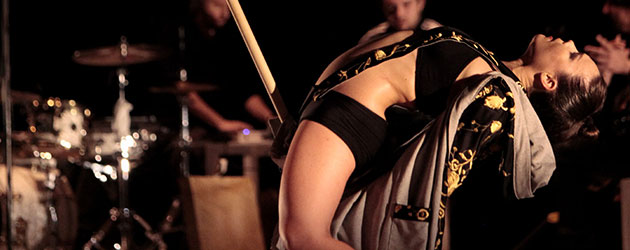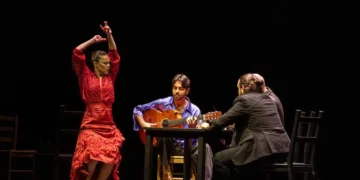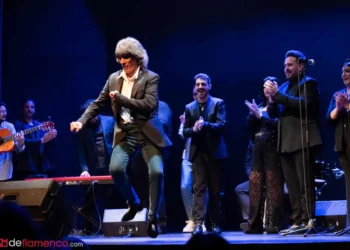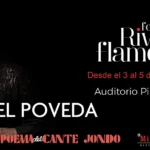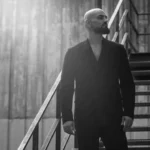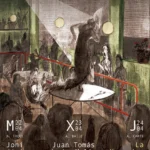Sara Arguijo
Photos: Marjon Broeks
Caída del cielo Dance: Rocío Molina. Guitar: Eduardo Trassierra. Cante: José Ángel Carmona. Palmas: José Manuel Ramos 'Oruco'. Percussion: Pablo Martín Jones. Script: Carlos Marquerie. Lugar: Muziekgebouw (Amsterdam). Bienal de Holanda. Saturday, January 28th. Attendance: Full
No sir, it was no ordinary day. Yesterday in Amsterdam we were at the premiere of Rocío Molina’s latest work, and the local audience bought up all the tickets, just as they did on Tuesday in Maastricht, aware of the privilege of having the artist with a show that until now had only been seen in France, and yet about which half the world was already talking. For this reason, until just minutes before the performance there were Dutch people waiting at the ticket box just in case they might be able to get a ticket, and many Spanish flamenco fans had flown in just so as not to miss the moment.
And among the audience, just as the lights were dimming indicating the start of the show, the lady sitting next to me rubbed her hands together enthusiastically, and vigorously exclaimed “Let’s go!”, which without a doubt synthesized the expectation that could be felt in the theater.
In actual fact, what Rocío Molina and her four accompanying artists achieve – and what a group it is! – is sheer genius, and, although twelve hours after digesting it, I’m still looking for grandiloquent adjectives that only sound insufficient, vacuous and presumptuous. Especially because if you are already a follower of the dancer, you must know that this is probably her best work to date, and if at some point in the past you no longer understood her, you’ll be glad to know that in this show there are plenty of reasons to reconcile with her dancing.
In other words, in “Caída del Cielo”, Rocío Molina sets herself free to construct, with amazing self-assurance, an original, coherent, sincere and visceral discourse that moves through a triptych of the chiaroscuros of Eden, the Delights and the Inferno, just as Bosch in his “Garden of Delights”, a painting which was part of the later encounter, became an inspiration along with Dante’s “Divine Comedy” and “The Song of Solomon”.
Bits and pieces of fandangos, garrotín, rumba, siguiriyas, a superb soleá which ought to be trademarked “Spain” and even the recognizable introduction of Camarón’s “La Leyenda del Tiempo” appear and are interrupted, are mixed and distorted with the excellent musical composition of Trassierra so that the dance not only exhibits her undisputed technical quality, but inserts hilarious bits that keep spectators completely on their toes throughout the hour-and-a-half of the show.
The dance interpreted on the floor with bata de cola, toreador pants with knee-guards, the witch with her broom, the harness with potato chips, the body spilling blood… this is how Rocío defends “this disgusting beauty” she explained, which is the woman’s body and her femininity. But not only from a stance of indignation, but also of humor, serenity and steadfastness.
The caress and the beating, noise and silence, pleasure and pain, love, destruction, sex. A guided tour straight through to the final ecstasy in which the artist penetrated ever more deeply into the spectators until reaching a collective orgasm. We are still exhausted. And yes, many people then needed a smoke.



